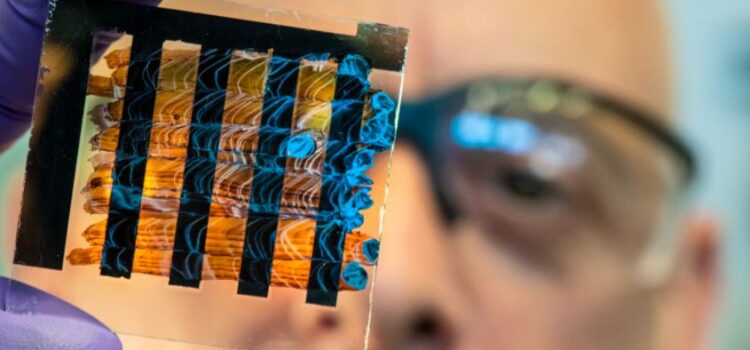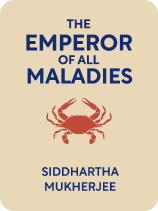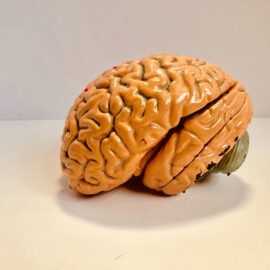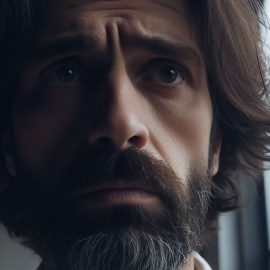

This article is an excerpt from the Shortform book guide to "The Emperor of All Maladies" by Siddhartha Mukherjee. Shortform has the world's best summaries and analyses of books you should be reading.
Like this article? Sign up for a free trial here .
Which genes are mutated in cancer? Is it possible to sequence all the gene mutations giving rise to cancer?
Cancer cells are extremely diverse, and finding the exact gene mutations in a cancer patient to inform treatment would be difficult and time-consuming. A much more feasible approach would be to identify and repair the disrupted biological pathways. Researchers believe that the typical cancer cell has anywhere from 11 to 15 disrupted pathways, with an average of 13.
Keep reading to learn about cancer cell genomes and pathways.
Gene Mutations in Cancer
According to Mukherjee, the period from 1950 to 2010 saw researchers working to understand and treat cancer at the microscopic level. Many doctors believed that the key to curing cancer lay in discovering which genes were mutated in cancer cells, and what specific effects those mutations had. They hoped that, by identifying gene mutations in cancer, they could find new ways to stop it.
Mukherjee says that cancer was clearly and thoroughly defined for the first time in 1999, when biologists Robert Weinberg and Douglas Hanahan created a list of six qualities that all cancer cells possess:
- Automatic mitosis. Cancer cells don’t need chemical signals to divide; they’re always “on.”
- Non-responsive to antigrowth signals. Cancer cells do not respond to chemical signals that normally stop cell division.
- “Immortality.” Cancer cells do not respond to chemical signals that normally trigger cell death (called apoptosis).
- Limitless replication. Normal cells can divide a limited number of times; cancer cells bypass this limit, allowing for apparently infinite cell division.
- Self-sustaining. Cancer cells induce nearby blood vessels to grow into the tumor, sustaining the tumor with oxygen and nutrients.
- Mobility. Cancer cells can travel through the bloodstream and attach to other areas of the body (this is called metastasis).
Cancer Cell Genomes and Pathways
The next major development came in 2006, when a project called the Cancer Genome Atlas began sequencing the genomes (complete DNA sequences) of various cancer cells, looking for the specific collections of mutations that give rise to cancer. Early results commonly showed anywhere from five to 80 mutated genes, depending on the type of cancer. Mukherjee says these results mean that cancer cells are extremely diverse, so identifying the exact mutations in any given cancer patient would be extremely difficult.
However, Mukherjee adds that a much less daunting approach would be to identify which biological pathways are affected in an individual patient and repair those, which would theoretically cure any form of cancer. Most biological processes happen through pathways—numerous genes working together to produce a single effect—and therefore many different mutations can lead to the same outcome because they all affect the same pathway.
Understanding cancer at the microscopic level—through the Cancer Genome Atlas as well as other research methods—can also help scientists identify possible carcinogens; they can directly test whether particular chemicals activate cancer-related genetic pathways.
Mukherjee tells us that, in 1914, biologist Theodor Boveri observed that cancer cells all have chromosomal abnormalities: damage or mutations in the cell’s DNA. He theorized that chromosomal damage causes cancer.
| What Is DNA? Boveri’s discovery in 1914 was the beginning of what we know about cancer today: It’s a corruption of our DNA. Therefore, to understand cancer, you must first understand what healthy DNA does, and how. Your genes are made of DNA (deoxyribonucleic acid). It’s like a cellular blueprint: DNA carries instructions on how to create proteins, which your body then uses for countless functions such as repairing tissue damage and transporting nutrients where they’re needed. Some of those proteins also help with the process of mitosis, replicating the DNA and helping the cell to divide in order to create new cells. If the DNA gets damaged or mutated, those instructions become garbled. In rare cases, they become garbled in such a way that the cell goes haywire: Mitosis happens much too quickly and much too frequently, leading to cancerous tumors. |

———End of Preview———
Like what you just read? Read the rest of the world's best book summary and analysis of Siddhartha Mukherjee's "The Emperor of All Maladies" at Shortform .
Here's what you'll find in our full The Emperor of All Maladies summary :
- An overview and rough timeline of the fight against cancer
- A look into the more technical aspects of cancer and cancer treatment
- The social aspects of the fight against cancer






